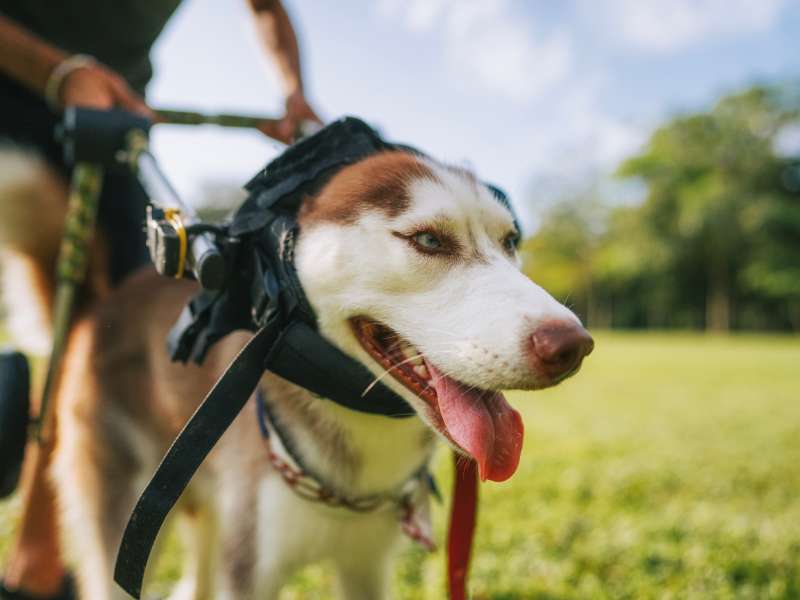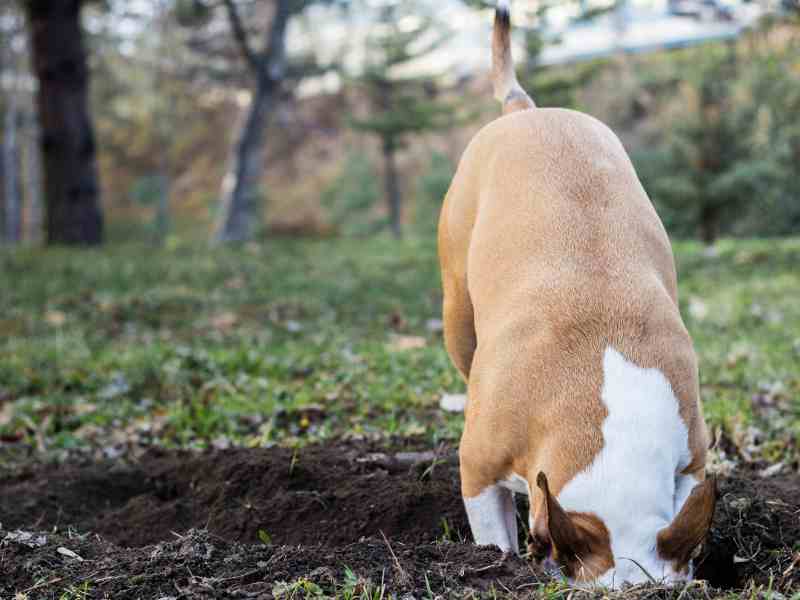Dogs are one of the most compassionate animals. They can sense what you are feeling. When you are happy, they wag their tails with joy. When you are sad, they are ready to cuddle you. However, knowing how dogs cry for help and understanding what your pup is feeling takes work.

Understanding its exact emotion is hard at times. You cannot tell what your furry best friend wants to manifest by a particular act or sentiment.
However, dog owners need to understand their pets to respond appropriately. Furthermore, it will assist them in taking care of their furry companions better. Although comprehension of all the acts is significant, knowing how dogs cry for help is far more vital. That’s because your pets need your support when asking for help, unlike in joyous circumstances. Understanding their cues and signals can ensure the well-being and safety of your beloved dog. At Petyfied, we aim to provide valuable insights and resources to help you decode your dog’s communication and provide the necessary help they need.
Signs Your Dog Is Asking for Help
Since your canine friends cannot talk, you must know how they ask for your attention and assistance. Thus, the list of ways to tell you how dogs cry for help is as follows;
- Whining
- Pacing
- Limping
- Scratching
- Aggression
1. How Do Dogs Cry for Help: Understanding the Whining Behavior
It’s a general fact that kids usually whine under challenging situations. Likewise, your canine friends are no different, either. Whines are one of the most prominent signs of telling you how your dogs cry for help. They need their human beings in that particular moment to calm them down.
They catch their owner’s attention through this specific act. However, understanding the signs your dog is asking for help with its whines is crucial. It allows you to comprehend the specific assistance your doggo needs in that particular situation, ensuring you can provide the necessary support.
Thus, the different feelings attached to the dogs’ whining are;
- Separation anxiety
- Fear
- Injury
- Feeling uncomfortable
- Stress-related anxiety
- Sickness
You must understand why your pup is whining and then respond appropriately. For instance, if you are going out and your lab starts whining, it may be due to separation anxiety. Dogs pay attention to signals indicating your departure, such as putting on your shoes or picking up the keys.
To help your canine buddy, desensitize them by randomly providing signals and going out for shorter periods. Gradually working on your behavior will yield positive results. Additionally, you can improve your pup’s behavior through environmental enrichment. In severe cases, consult a veterinarian for prescribed anti-anxiety medications.
2. How Do Dogs Cry for Help: Decoding the Pacing Behavior
Pacing back and forth is one of the signs your dog is asking for help. This anxious behavior indicates that your furry friend is feeling discomfort and is seeking your support. By addressing the underlying cause and providing remedies to help them relax, you can alleviate their restlessness. With your assistance, your dog will eventually stop pacing and find relief.
There can be a variety of sources to make your pup uncomfortable or anxious. Thus, the following can be the reasons behind your pet’s pacing;
- Stress
- Anxiety
- A sign of dementia in older doggies
- Medical issues
However, it’s nothing to worry about if your canine friend is pacing for a shorter span. Moreover, giving your pet, while it’s pacing, a new toy or bone works best as a distraction. Other than that, taking it out for a walk is helpful too.
Nonetheless, it’s worrisome if pacing back and forth occurs for longer and cannot be stopped by any distraction. You should call a professional dog trainer in that case.
3. Limping: How Dogs Cry for Help

Limping is one of the several ways to tell how dogs cry for help. Dogs also display lameness because of pain in the limb or other organs, just like other creatures. Your pet may overreact in such a situation. That’s because they don’t understand what’s happening to them.
Also, they fear their restlessness caused by pain. Thus, all this makes them react more than the actual ache demands.
Furthermore, the following can be common reasons behind your pup limping;
- Minor discomfort (e.g., broken nail or a twisted ankle)
- Chronic issues (e.g., arthritis, hip or elbow dysplasia, or Lyme disease)
However, if your furry friends seem okay to you after a while and can walk, then keep an eye on them for the next two days. If the limping goes away, then there is nothing perturbing. However, if the problem persists, you need to get an appointment with a veterinarian. It’s important to pay attention to signs your dog is asking for help and seek professional guidance for their well-being.
4. How Do Dogs Cry for Help: Recognizing the Signs of Scratching
Scratching is one of the signals to show that your pet is going through some gnarly allergy. It may feel itchiness on its skin and, thus, starts scratching. This incessant scratching is one of the signs your dog is asking for help, indicating that it needs relief from the discomfort it is experiencing.
The following are three common reasons behind your pup’s scratching;
- Flea allergies
- Hay fever
- Food allergies
Moreover, your pet is uncomfortable in that state; therefore, it needs proper treatment as soon as possible. It’s not easy for you to perform a diagnosis and treat your furry friend at home. The signs of these allergies are similar to some extent.
Thus, knowing the issue is challenging without going to a vet. Also, it’s essential to remedy these allergies; otherwise, they develop secondary bacterial or fungal infections.
5. Understanding Dog Aggression: Signs of Cry for Help

It’s very uncommon for dogs to become aggressive out of nowhere. It’s also a myth that some breeds are inherently aggressive. Experts have already discarded the misbelief through their research. Thus, there can be different reasons for your cur’s violent behavior.
One of the signs your dog is crying for help is aggression. Understanding the causes of your dog’s aggression is crucial to providing the right support. Learn how dogs cry for help and address their needs appropriately. The following are some prospective causes
- Pain (e.g., due to injury)
- Illness
- Fear
- Trauma trigger
It’s hard to predict your doggo’s aggressive conduct when past trauma induces it. However, you can expect aggression when caused by pain and, thus, prevent it. For instance, if your pup starts growling or nipping, it shows aggressive behavior after that.
In that case, it’s best to take it to the vet for appropriate treatment. You can also take a veterinarian’s advice on how to cope with your dog’s aggression when trauma triggers or fear causes it.
How dogs cry for help: 3 warning signs that may go unnoticed
You notice when your pups whine or become aggressive. However, some behaviors are cries for help, yet you ignore them. That’s because such conducts are very subtle appeals for support than those mentioned previously. However, it’s equally important to notice them like the other warning signs. Thus, three such conducts are as follows;
- Change in behavior: It’s pretty complex to detect behavioral changes immediately. Nonetheless, a repetitive pattern can catch attention though it takes time. However, pet owners must be sensitive to changes in their pets’ conduct before it gets too late. For instance, dogs usually don’t shy away from petting. But when your pup does so, something is probably wrong. It may be your lab’s way of telling you that a particular area you touch is injured. Thus, you need to respond quickly; otherwise, the wound may worsen. However, this conduct doesn’t always mean your dog is in pain. At times, your furry friend is not in the mood for petting. Understanding how dogs cry for help and addressing their needs accordingly is crucial for their well-being.
- Change in habits: It’s hard to tell that there is any problem when your pet’s eating and drinking habits change. Moreover, even if you notice, you may shrug it off. But it can be a warning sign too. It can be worrisome if your pup has lost appetite, is very hungry, or is suddenly drinking too much or too little water. That’s because such changes may be symptoms of as severe diseases as diabetes or Cushing’s disease. Especially if these behaviors continue for over 24 hours along with other severe signs such as vomiting, diarrhea, etc., then visit the vet promptly. Even so, eating less or more than usual is not always a problem and can be normal too. Recognizing the signs your dog is asking for help and seeking veterinary care when necessary is crucial for their health and well-being.
- Change in energy levels: It’s another warning sign if your canine buddy is suddenly experiencing unusual energy levels. It may imply that there must be some underlying condition. Lower energy levels indicate lethargy, a common sickness symptom in younger active canine creatures. You must visit the vet if unusual energy levels continue for over a day. Although noticing a sudden change in energy levels is probably hard, an observant pet parent can do it quickly.
Normal Behaviors That Are Signs Your Dog is Asking for Help
Our furry friends don’t ask for help all the time. They are social beings who are usually happy and act normally. However, certain normal behaviors of dogs can function as cries for help. The list of such conducts is below;

- Digging: It’s a known fact that digging is normal dog behavior. Your canine buddies do so to get rid of excessive energy. But digging can also be a way for dogs to cry for help. Your pup may dig because it’s anxious or fearful, signaling that it needs assistance. Notice if your pet practices this behavior during stressful events like storms. Moreover, it can dig a hole to find a place to hide from someone it fears. However, remember that Terriers, Hounds, Beagles, Huskies, and Border Collies are inherently diggers.
- Chewing: It’s another common behavior in dogs that can serve as a sign of asking for help. Chewing can indicate stress or nutritional deficiencies in your pet. If your lab is on a restricted diet, it may not be getting enough nutrients, leading to chewing behavior. Additionally, puppies going through the teething process may also chew excessively. Providing a teething toy can be beneficial in such situations. If the chewing persists or becomes destructive, consulting with a veterinarian is recommended.
- Barking: It’s also a general doggo habit. Pet owners may find it hard to detect any problem behind barking. But if a lab is excessively barking, this may imply that it’s crying for help. Many times, it’s also a sign of anxiety, fear, and distress if accompanied by other negative behaviors. Pay attention to your dog’s excessive barking and take appropriate steps to calm your dog down or get it treated by a vet, ensuring its well-being.
- Licking: Doggos usually lick themselves and their humans for various reasons, including grooming and bonding. However, excessive licking can be a sign that your dog is asking for help. For instance, if your pup is frequently licking its paws, it may be indicating an underlying allergy or itchiness. In such cases, it is important to consult with your veterinarian. Additionally, if your dog is constantly licking you, it could be a sign of anxiety and a need for reassurance.
It’s likely that now you are well aware of how dogs cry for help or sign your dog is asking for help. However, there is a huge language barrier between you and your pet. Therefore, you need to make a lot of effort to ensure proper communication.
For example, your pet can’t tell you it’s feeling anxious, or its leg is hurting. Instead, it can just whine or limp. The doggo does its part right there. Then it’s your turn to understand what your pet is trying to convey.
Thus, reading good literature about how dogs cry for help was probably your first step. With patience and the right approach, you can quickly ensure healthy communication between you and your furry buddy.
Dogs cry for help through various behaviors and vocalizations. They may whine, bark excessively, exhibit anxious or aggressive behavior, pace back and forth, or show signs of discomfort such as limping or scratching. Understanding these signs can help pet owners recognize when their dogs are asking for assistance and respond appropriately.
Dogs have different ways of asking for help. Three common ways include whining, pawing or nudging, and making prolonged eye contact. These behaviors are part of how dogs cry for help and signal their need for assistance from their owners.
You can tell if a dog is crying by observing their body language and behavior. Signs may include whining, whimpering, excessive licking, pawing at you, or seeking constant attention. These are some of the ways how dogs cry for help and express their emotional distress or discomfort.
No, dogs do not have emotional tears as humans do. However, they can display signs that indicate they are asking for help or experiencing emotional distress. These signs may include changes in behavior, excessive vocalization, restlessness, loss of appetite, or seeking more attention than usual. It’s important to recognize these signs as your dog’s way of communicating and respond appropriately to provide the help and support they need.
